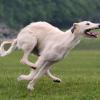-
Content Count
7,517 -
Joined
-
Last visited
-
Days Won
15
Content Type
Profiles
Forums
Gallery
Articles
Gun Dealer's and Fieldsports Shop's
Reloading Room
Blogs
Calendar
Store
Classifieds
Everything posted by skycat
-

Fitness And Conditioning (Skycat) Running Dog Maintenance
skycat replied to paulus's topic in Lurchers & Running Dogs
Emptied it now. -
My own line of bushing terriers have been smooth coated for generations now, and whilst they do end up with ragged ears and often get deep scratches along their backs and under their chests, it certainly doesn't stop them or slow them down in any way. After a while the ears get so covered with scar tissue that they don't really bleed any more as the skin gets so thickened. Not always pretty to look at, but they do catch a lot in thick brambles. The latest one of the line, 1/4 Whippet now, is only about 14-15 inches and so fast that she slides through cover. The rough coated dogs I used to have
-

Pup Retrieving Sometimes, Sometimes Dropping
skycat replied to springfield's topic in Lurchers & Running Dogs
It's more likely that the dog hasn't got the right connection with you. For a dog to retrieve to hand, if it is not hard-wired into its breeding as in Labradors etc, it must see you as part of the process, not an end to its enjoyment. Have a read of the tug training article here: http://www.thehuntinglife.com/the-value-of-tug-games-with-puppies/ -
It sounds as though she is prone to this. Some dogs are, no matter what the shape of their feet or their breeding. As you say, it is the fine silty stuff that works its way under the nail bed, and there is only one way to sort this and that is to bind the ends of the toes up before every run. Just the bit where the claw joins the toe, and use tiny cut down strips of elastoplast fixed with a dab of Superglue. It's a pain in the rear, but worth it. With a bit of practice you get very quick at it and all you have to do is soak the foot in hot water to get it off. Best to get someone who already k
-

Bruising Under Skin-Torn Muscle?
skycat replied to Somewhereyournot's topic in Lurchers & Running Dogs
Sounds like a little tear in the monkey muscle: tricep. Good advice you've been given. Massage daily gently to help disperse blood and increase chances of correct healing. -

Bruising Under Skin-Torn Muscle?
skycat replied to Somewhereyournot's topic in Lurchers & Running Dogs
Blood under the skin can also be caused by bruising: like from a knock to the area. This is one of the reasons why so many lurchers suffer from long term scarring to previously torn muscles, because the owners just thought the dog had bashed itself, and what they thought was a bruise was in fact subcutaneous bleeding from a torn muscle. It might help if you say where the injury is exactly, and a photo if you can take one. -
Something may have got stuck right behind the eye ball itself, and impossible to see. If it doesn't improve soon I'd get the dog to the vet so they can squirt some anaesthetic drops in the eye and have a good look behind the eye ball. One of my dogs once got a grass seed stuck right behind the eyeball, and because it was so sore she wouldn't let me have a good look. The vet numbed the eye with drops and was able to see just a tiny bit of a grass seed under the lid. It was a big seed and had to come out very slowly and carefully indeed because it had already started to break down after only 24
-
I've had a couple of dogs with broken teeth. My vet advised me to leave them unless they were causing problems. They never did and it saved the risk of putting a dog under GA and a hefty bill.
-

Fitness And Conditioning (Skycat) Running Dog Maintenance
skycat replied to paulus's topic in Lurchers & Running Dogs
It's not that the 'wrong' muscles build up with too much bike work, but rather that they don't get the stretch and suppleness in the joints just by trotting. It's like anything: for example, if you spent all day walking, you wouldn't build up the muscles for running. Try sprinting 100 yards a few times without doing any running training. Guaranteed very sore muscles and tight tendons the next day. Same for dogs: they do need a good base fitness and trotting does that, but to become running fit they need to gallop, and the twisting and turning they do after prey strains joints, tendons and musc -
Most wrist injuries involve ligaments: the bits that hold the joint together. Ligaments have a very poor blood supply which is why they take so long to heal if they have been strained, or worse, ruptured. In the case of a strain, a lot of time and rest (lead walking only for months and months) can effect a cure, but if the ligament has been torn then the scenario is a whole lot worse. I once had to keep a bitch on the lead for 6 months, without surgery I should add, and she did come right, but there was always a lot of scar tissue around the wrist and I had to be careful where I ran her and wh
-
There is a belief that a terrier needs to be hard as nails around other dogs and that its aggression means that the dog will be an excellent worker. I used to keep Lakelands many years ago, and I never had a moment's peace: always making sure that they weren't about to try and kill each other. Then I discovered the type I keep now: ultra submissive to me and other dogs, friendly, never a sideways stare or a curled lip. They work just as well. In fact the old bitch I have now (12 years old) accounted for just as many if not more foxes than all the thuggish types put together, and I don't mean t
-
Cracking little dog: and useful too.
-
Frustrating though it is I just put up with my bitches in season. I've tried all the methods of stopping their seasons and there are always side effects, at least I've noticed side effects varying from temperament changes to loss of drive, changes in appetite. It was the temperament changes that were the worst as my dogs live together in the house, and one bitch got very surly and miserable. Not saying that it affects every bitch, but not for me.
-
While she's in season she'll be fine, and for about 3-4 weeks afterwards. After that is when they lay down fat and lose muscle tone. This corresponds with pregnancy, if she had been mated. Some bitches don't come fit again for up to 3 months, some even longer. I should know! I have one bitch who is a mass of blubber for a full 4 months from the start of her season. And it doesn't matter how much exercise I give her or how little I feed her. Bloody annoying. She's OK for a bit of mooching, but anything truly strenuous is a no-no.
-

Who Knows What This Is??? Should You Be Worried???
skycat replied to cooper101's topic in Lurchers & Running Dogs
Get anything like that checked out by a vet. Might be just a cyst (bit of thorn surrounded by fluid) or could be more serious. If it's been there a while better to be safe than sorry. Loads of things on this site: but don't panic, might not be life threatening. http://www.dog-health-guide.org/doglumpsonskin-1.html -
I have to say that with the little dogs we catch twice as many rabbits in cover. At this time of year pretty much all are caught in cover as the only rabbits around are too savvy to risk breaking cover. Just wish mine would give the odd yap though. She's silent, unlike her dam.
-
Congratulations Mrs Ross! And you too of course, though your's was just the fun part, eh!
-
Do not, whatever you do, send her away to a kennels to be 'trained'. The professional you need will assess both you and the dog in her own environment, and the only person I would recommend is Jim Greenwood. He is the best there is. Here's a link to his website: he does all sorts of dogs and is brilliant at helping owners rehabilitate dogs that have been seriously damaged in their past lives. Give him a ring: http://jandjgreenwood.co.uk/
-
Some interesting points of view in this thread. Here's my tuppence worth: Dogs can go wobbly through dehydration, especially on a warmish night. Don't know about the rest of the country but here in Cambridgeshire its so bloody warm its almost t shirt weather. Dry wind also dehydrates dogs more than damp weather. Excitement can also increase risk of dehydration. Stressy, panting dogs will lose more fluid than a calm dog. Feeding dry food can increase the risk of dehydration because the dog needs to drink one hell of a lot more than a dog fed on raw, moist food. Dog gets excited prior
-

Cruciate Injury - Recovery Without Surgery
skycat replied to satan80's topic in Working Dog Health & Training Talk
i was expecting a happier ending to the story than that Took her out for a short lead walk tonight and not limping, so a bit of progress. I was straight into your book btw as soon as i got back with her limping last week, like i always do when things go t*ts up with her. Was hoping to find a 'cruciate ligament miracle recovery section' but sadly not The problem with writing such a book is that I had to stay general for most of the injuries as I am not a vet and could not legally put in the type of advice that a vet might give. Secondly, there are so many varying degrees of jo -
But you could also say that the dog deserved to catch after a punishing run on very wet ground.
-
Might it not be that she suffers from joint soreness and muscle stiffness. Ligaments, tendons and muscles all lose elasticity with age, and I'm walking around like a cripple when I first get up, but the longer I move about the easier my legs move. Gentle exercise is essential for all us oldies.
-

Cruciate Injury - Recovery Without Surgery
skycat replied to satan80's topic in Working Dog Health & Training Talk
I had a lurcher spend 6 months on the lead: walking only, and he recovered very well, though there was considerable swelling around his knee. It didn't appear to bother him but I can't say if it would have been a problem long term as he broke his neck a year after he recovered from the cruciate injury. -
Fascinating video. Hard to watch the dogs getting slammed into the gates, though. I had to watch a few more similar ones after that as the whole herding thing is so interesting. Seeing the way a small predator can gain control over enormous cattle. The power of the eye, that determination and focus is amazing.
-
Sounds like forced training using pain. An outdated method of training and now there are many more positive ways of training a dog. Teaching a dog to sit is the easiest thing in the world if you use food to start off with. Going back on to the haunches is the most natural thing for all but the leggiest sight hounds.


